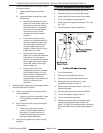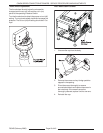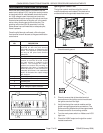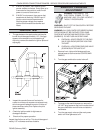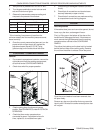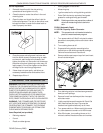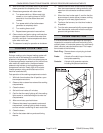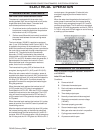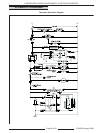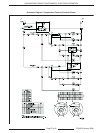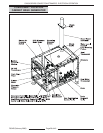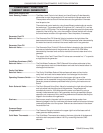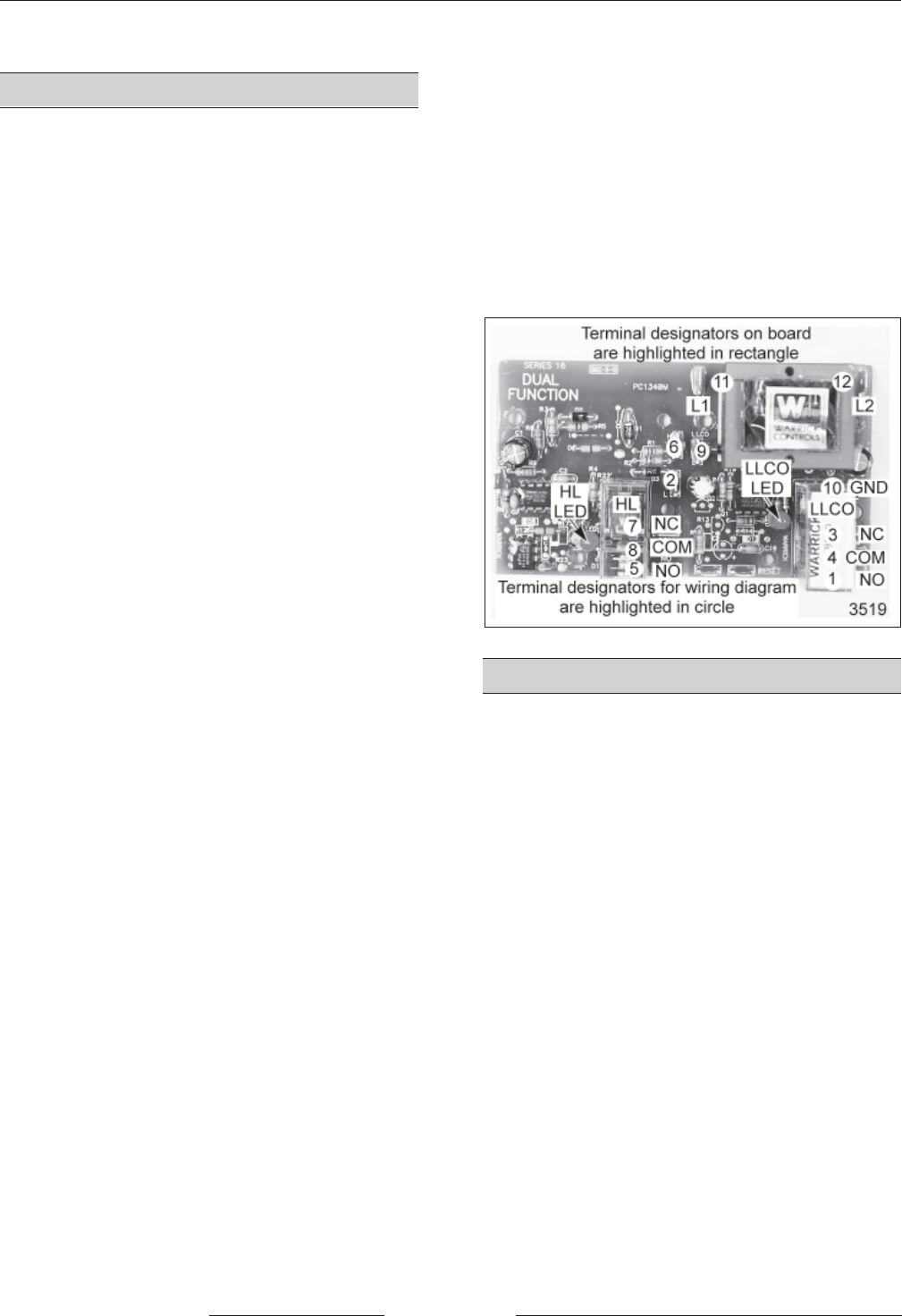
F35425 (February 2006) Page 22 of 40
C24GA SERIES CONVECTION STEAMERS - ELECTRICAL OPERATION
ELECTRICAL OPERATION
WATER LEVEL CONTROLS
Low Level Cut-Off and Differential Control
The steamer is equipped with three water level
sensing probes (high, low and low level cut-off) and a
single water level control board. The water level
control board performs two functions:
1. Provide low level cut-off protection to shut off the
heat source in case the water level drops below
the low level cut-off (LLCO) probe.
2. Perform as a differential level control to maintain
the water level between the low and high water
level probes.
The input voltage (120VAC) is applied across termi-
nals 11 and 12 of the Water Level Control (WLC). This
is applied to the primary of the transformer. On one
side of the transformer secondary power is provided to
the control by a series path through chassis ground
(terminal 10). The other side of the transformer
secondary (12VAC) is attached to the probe that
directs power to the other side of the internal relays
(LLCO, HL, and ILR). As water enters the generator, it
becomes part of the water level control’s circuit.
When the water level in the generator reaches a
probe, that circuit is completed.
The inverse latching relay (ILR) of the board is de-
energized, leaving the ILR-1 (N.O.) and ILR-2 (N.C.).
When the main power switch is turned on, power is
supplied to the water level control (WLC) board which
energizes the high level (HL) relay and illuminates the
HL relay LED. With the HL-3 contacts closed, the
generator fill solenoid is energized and water begins
filling the generator.
When the water level reaches the low level cut-off
(LLCO) probe, the LLCO relay is energized and
illuminates the LLCO LED. With the LLCO-2 contacts
closed the heat source is then energized. The LLCO
relay will remain energized and its LED will stay lit
until the water level in the generator drops below the
LLCO probe.
When the water level reaches the low level (LL) probe,
power to terminal 2 on the WLC board is present but
no switching occurs.
After the water level reaches the high level (HL) probe,
the inverse latching relay on the board is energized
and locked through the low level probe (LL) and ILR-1
contacts. With ILR-2 contacts open, this de-energizes
the HL relay and the HL LED goes out. With the HL-3
contacts open, the generator fill solenoid is de-
energized, stopping the flow of water into the
generator.
When the water level drops below the low level (LL)
probe, power is removed from the inverse latching
relay, the HL relay energizes through ILR-2, and HL
contacts change state. The fill solenoid is energized
through HL-3 to refill the generator and the HL LED is
lit. The HL relay and LED will toggle on and off during
a cooking cycle as needed.
SEQUENCE OF OPERATION
Refer to schematic diagrams 00855693 , 00855424
and 00856656.
Initial Fill and Preheat
Conditions:
A. Power switch off.
B. Cold water thermostat open.
C. Drain cold water condenser solenoid
de-energized.
D. Timer delay output open.
E. Normally closed solenoid de-energized.
F. Generator connected to correct voltage
(120VAC).
G. Generator properly grounded.
H. Gas and water supply valve(s) on.
I. Main gas valve manual valve in on position.
J. Cycling pressure switch closed.
K. Air pressure switch open.



